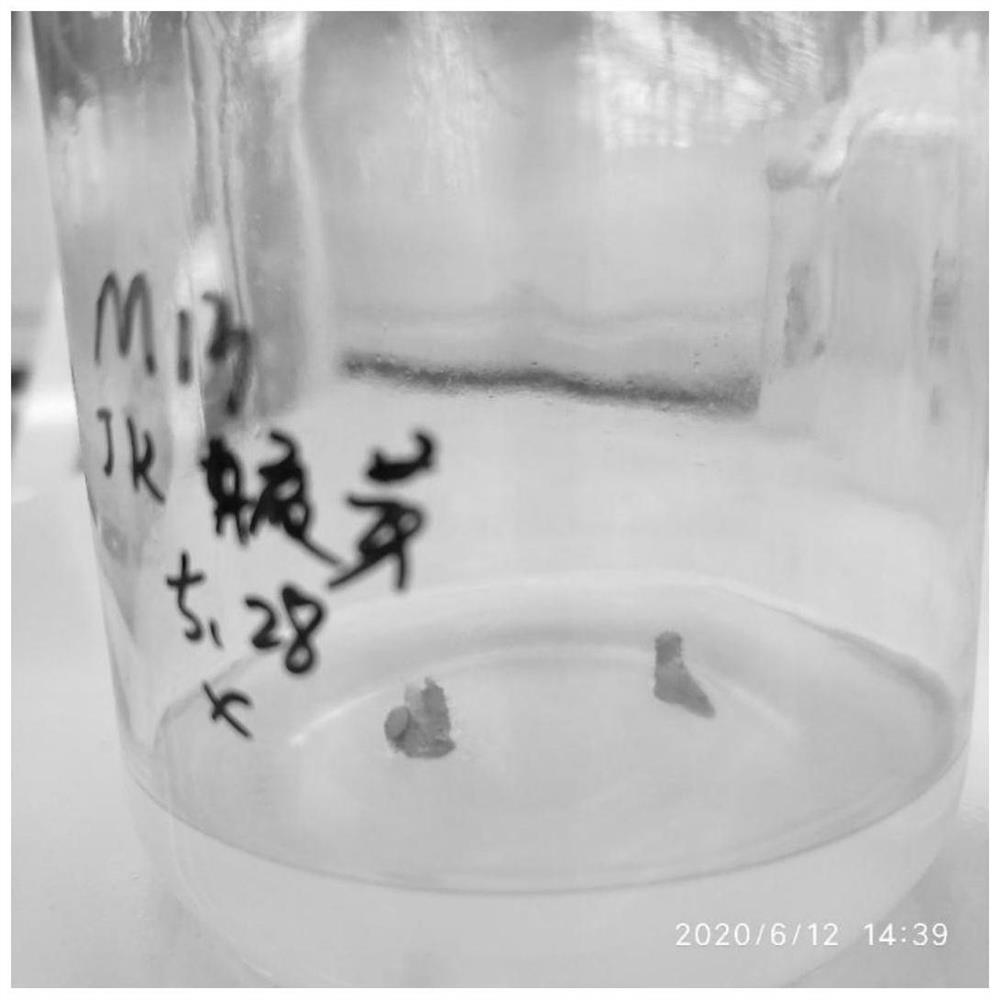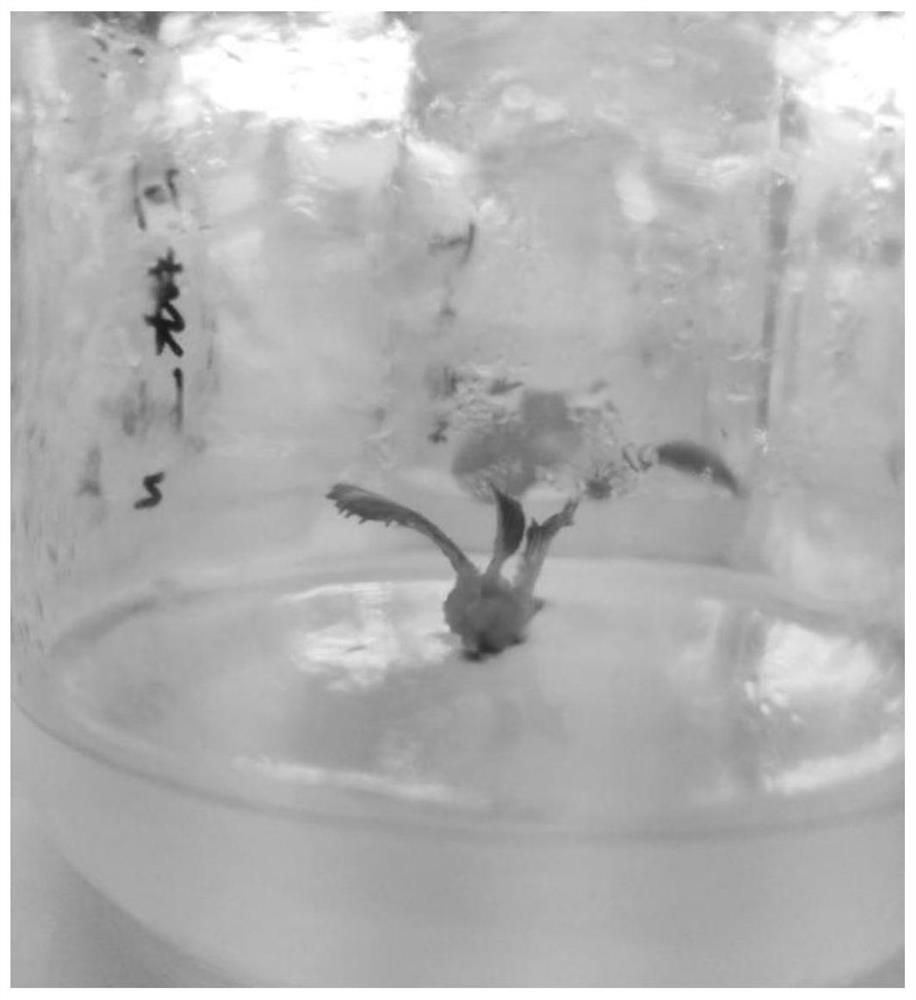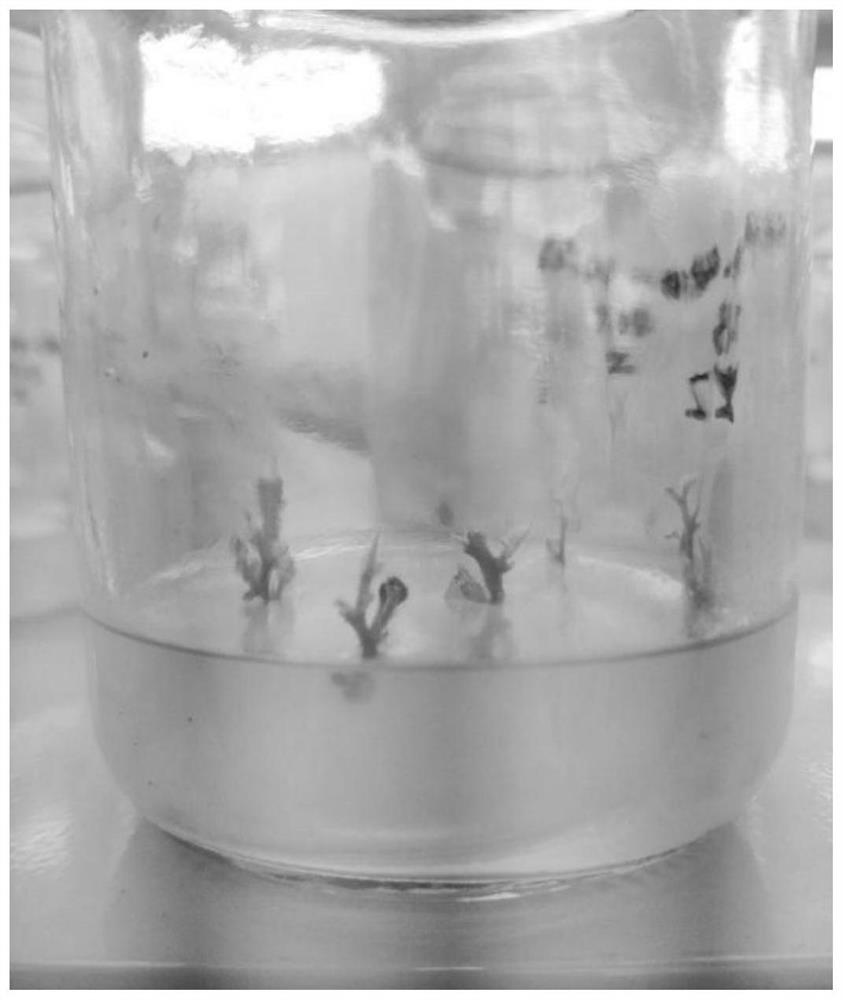A method for transplanting rootless tissue-cultured seedlings of delicious kiwifruit rootstock
A technology of kiwifruit and tissue culture seedlings, which is applied in the field of transplanting rootless tissue culture seedlings of delicious kiwifruit rootstocks, can solve the problems of increasing the time of kiwifruit tissue culture propagation, the cost of seedling cultivation, time-consuming and labor-intensive, etc., to shorten the propagation time and Seedling cost, simplified seedling technology, and the effect of solving browning
- Summary
- Abstract
- Description
- Claims
- Application Information
AI Technical Summary
Problems solved by technology
Method used
Image
Examples
Embodiment 1
[0031] Embodiment 1 explant processing
[0032]Rinse the branches collected in the field for 30 minutes under running water, place them on the ultra-clean workbench, sterilize them with 75% alcohol for 3 minutes, rinse them with sterile water for 4 times, and use 0.1% HgCl 2 The solution was sterilized, the time was set to 4, 6, 8, 10, 12 min, and the sterile water was washed 4 times. The sterilized stem section is cut into 1.5cm length, and each stem section has an axillary bud, which is inserted vertically in the medium, and the medium is MS medium with 0.2mg / LNAA and 2mg / L6-BA added. After 30 days, the pollution rate was counted. At the same time, explore the alcohol disinfection test after raising mercury first, and the time setting remains unchanged. The test results are shown in Table 1.
[0033] Rinse the branches collected in the field under running water for 30 minutes, add 0.1ml / L bristol clear to soak for 10 minutes (with no bristol clear as the control), rinse 3...
Embodiment 2
[0040] Embodiment 2 adventitious bud regeneration induction
[0041] The terminal buds or axillary buds of the above-mentioned sterilized twigs were cut in the ultra-clean workbench as explants. When cutting the terminal buds, try to cut off all the small leaves and fluff around them, and keep about 0.3-0.5cm and insert them vertically into the bud induction medium; About 1cm, insert the bud induction medium, so that the axillary buds face up. The bud induction medium is MS medium supplemented with 0.2mg / L NAA and 1-5mg / L6-BA. 1 stem section in each culture bottle, each treatment 10 bottles, repeated 3 times. They were cultured under the conditions of light intensity 3000-3200Lux, light duration 12h / d, and temperature 24°C. Count the survival rate after 30 days, and investigate whether there are phenomena such as browning and vitrification. The test results are shown in Table 3.
[0042] Table 3 The effect of different mass volume ratios of 6-BA on the induction of advent...
Embodiment 3
[0046] Embodiment 3 Adventitious bud proliferation culture
[0047] With MS as basic medium, 6-BA and GA3 were added for treatment. The concentration gradient of 6-BA was set to 0.3mg / L, 0.5mg / L, and 0.7mg / L. The treatment of GA3 was divided into two types: adding before sterilization and adding after sterilization. The concentration gradient before sterilization was set at 1mg / L. L, 2mg / L, 3mg / L, 4mg / L, 5mg / L, the concentration gradient after sterilization is set to 0.1mg / L, 0.2mg / L, 0.3mg / L, 0.4mg / L (after filtering through the filter, add ). 3-4 stem segments per bottle, 10 bottles per treatment, repeated 3 times. Placed under the conditions of light intensity 3000-3200Lux, light 12h / d, and temperature 24°C, the proliferation of adventitious buds was cultivated. After 30 days, the proliferation coefficient was counted to investigate whether there were browning and vitrification. The test results are shown in Table 4.
[0048] Table 4 Effects of different mass-volume rat...
PUM
 Login to View More
Login to View More Abstract
Description
Claims
Application Information
 Login to View More
Login to View More - R&D
- Intellectual Property
- Life Sciences
- Materials
- Tech Scout
- Unparalleled Data Quality
- Higher Quality Content
- 60% Fewer Hallucinations
Browse by: Latest US Patents, China's latest patents, Technical Efficacy Thesaurus, Application Domain, Technology Topic, Popular Technical Reports.
© 2025 PatSnap. All rights reserved.Legal|Privacy policy|Modern Slavery Act Transparency Statement|Sitemap|About US| Contact US: help@patsnap.com



